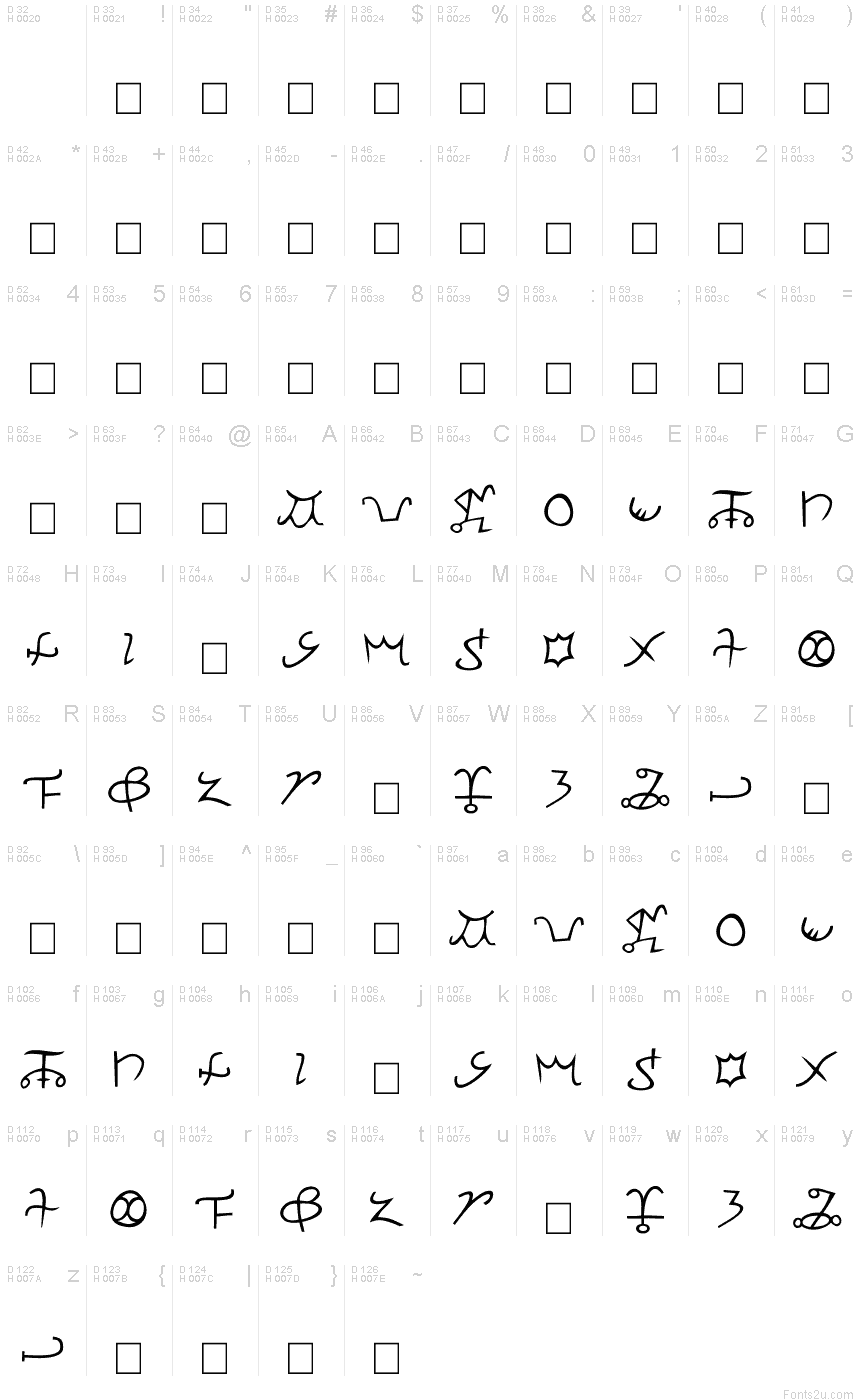Apollonian
TrueTypeFreeware
- Accents (partial)
- Euro
Apollonian.ttf
Tags
Character map
Please use the pulldown menu to view different character maps contained in this font.

Basic font information
Copyright notice
© 2002 Daniel U. Thibault. All Rights Reserved.
Font family
Apollonian
Font subfamily
Regular
Unique subfamily identification
Urhixidur:Apollonian Regular:2002
Full font name
Apollonian
Name table version
Version 1.00; 2002 August 28
Postscript font name
Apollonian
Manufacturer name
Designer
Daniel U. Thibault
Description
Apollonian 2002 1.00
A late-medieval secret alphabet which has been recorded in a number of versions, usually with a Greek mapping (e.g. Blaise de Vignère's «Traité des chiffres», 1586). Though traditionally identified as the script of Apollonius of Tyana, there is no evidence to substantiate this claim.
Apollonius of Tyana was the most famous philosopher of the Greco-Roman world of the first century A.D. He devoted the major part of his long life to the purification of the many cults of the Roman Empire and to the instruction of the ministers and priests of its religions. A well-travelled contemporary of Jesus Christ, many "wonders" and "miracles" were consigned by his biographer, Flavius Philostratus (who wrote his Life of Apollonius circa 220 A.D.), fodder for the long-running theological debate on the nature of miracles.
The glyphs are taken from the «Dictionary of Occult, Hermetic and Alchemical Sigils»
by Fred Gettings (1981). This font supplies a Greek mapping in addition to a Latin one (with Chi mapped to C, Eta to H, Theta to Q, Upsilon to U, Omega to W, Psi to Y). There is no J nor V.
A late-medieval secret alphabet which has been recorded in a number of versions, usually with a Greek mapping (e.g. Blaise de Vignère's «Traité des chiffres», 1586). Though traditionally identified as the script of Apollonius of Tyana, there is no evidence to substantiate this claim.
Apollonius of Tyana was the most famous philosopher of the Greco-Roman world of the first century A.D. He devoted the major part of his long life to the purification of the many cults of the Roman Empire and to the instruction of the ministers and priests of its religions. A well-travelled contemporary of Jesus Christ, many "wonders" and "miracles" were consigned by his biographer, Flavius Philostratus (who wrote his Life of Apollonius circa 220 A.D.), fodder for the long-running theological debate on the nature of miracles.
The glyphs are taken from the «Dictionary of Occult, Hermetic and Alchemical Sigils»
by Fred Gettings (1981). This font supplies a Greek mapping in addition to a Latin one (with Chi mapped to C, Eta to H, Theta to Q, Upsilon to U, Omega to W, Psi to Y). There is no J nor V.
Extended font information
Platforms supported
PlatformEncoding
UnicodeUnicode 1.0 semantics
MacintoshRoman
MicrosoftUnicode BMP only
Font details
Created2002-08-28
Revision1
Glyph count273
Units per Em2048
Embedding rightsEmbedding for editing allowed
Family classNo classification
WeightSemi-light
WidthMedium (normal)
Mac styleBold
DirectionOnly strongly left to right glyphs + contains neutrals
Pattern natureRegular
PitchNot monospaced